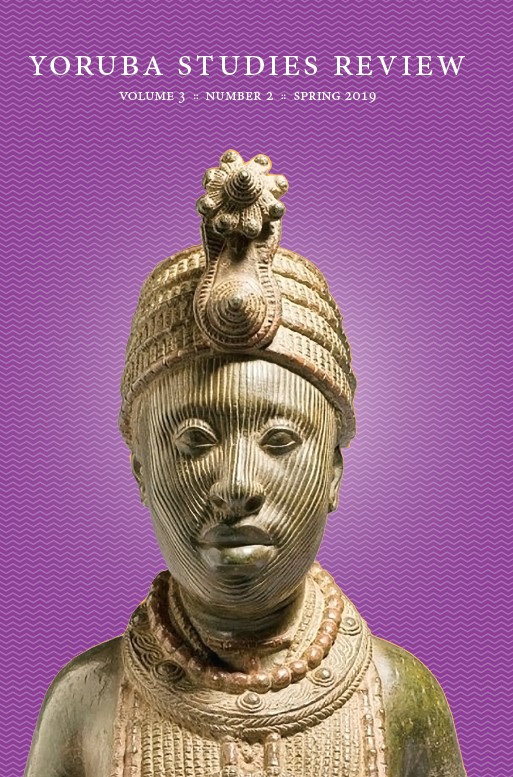Abstract
One of the main chords through which Yorùbá cinema connects with its core target audience – the Yorùbá people both at home and in the diasporas – is the penchant of Yorùbá filmmakers to present core traditional values, mores, philosophies and customs in their works. A significant part of this presentation lies in the deliberate choice of actors whose off-screen personas already enjoy public acclamation as knowledgeable ‘masters’ or practitioners of Yorùbá culture and traditions. For over two decades of contemporary Yorùbá cinema practice, Adébáyọ̀ Fáléti ́ remained one of the most prominent and culturally renowned actors that filmmakers have used in portraying, presenting and accentuating different cultural values of the Yorùbá. Long before he became a star film actor, Adébayọ́ Fa ̀ ́leti’s impressive body of works ́ as a poet, theatre artiste, journalist, translator, broadcaster, writer and culture administrator had firmly established his vast knowledge and mastery of Yorùbá language and philosophy. In many films therefore, the appearance of Adébayọ́ ̀ Fáleti in any role, instantly and inevitably transforms that filmic ́ character into a symbol of Yorùbá cultural authenticity, depth and authority. This, arguably, is the function of the veteran Yorùbá actor Fáleti in many no ́ - table and outstanding Yorùbá films from Túndé Kèlání’s Ṣaworoidẹ (1999), Agogo Eè wọ ̀ ̀ (2002), Ẹfuń ṣetan Ani ́ wú rá ̀ (2005), Thunderbolt (2001), to Níji Àkànní’s Arà mọ ̀ tú ̀ (2010) and Muyiwa Adẹmọ́la’s OwóÒkutá (2010). This, this paper examines the manipulation of iconic significations of Adébáyọ̀ Fáleti in ́ Ṣaworoidẹ and Agogo Ẹẹwọ.

This work is licensed under a Creative Commons Attribution-NonCommercial 4.0 International License.
